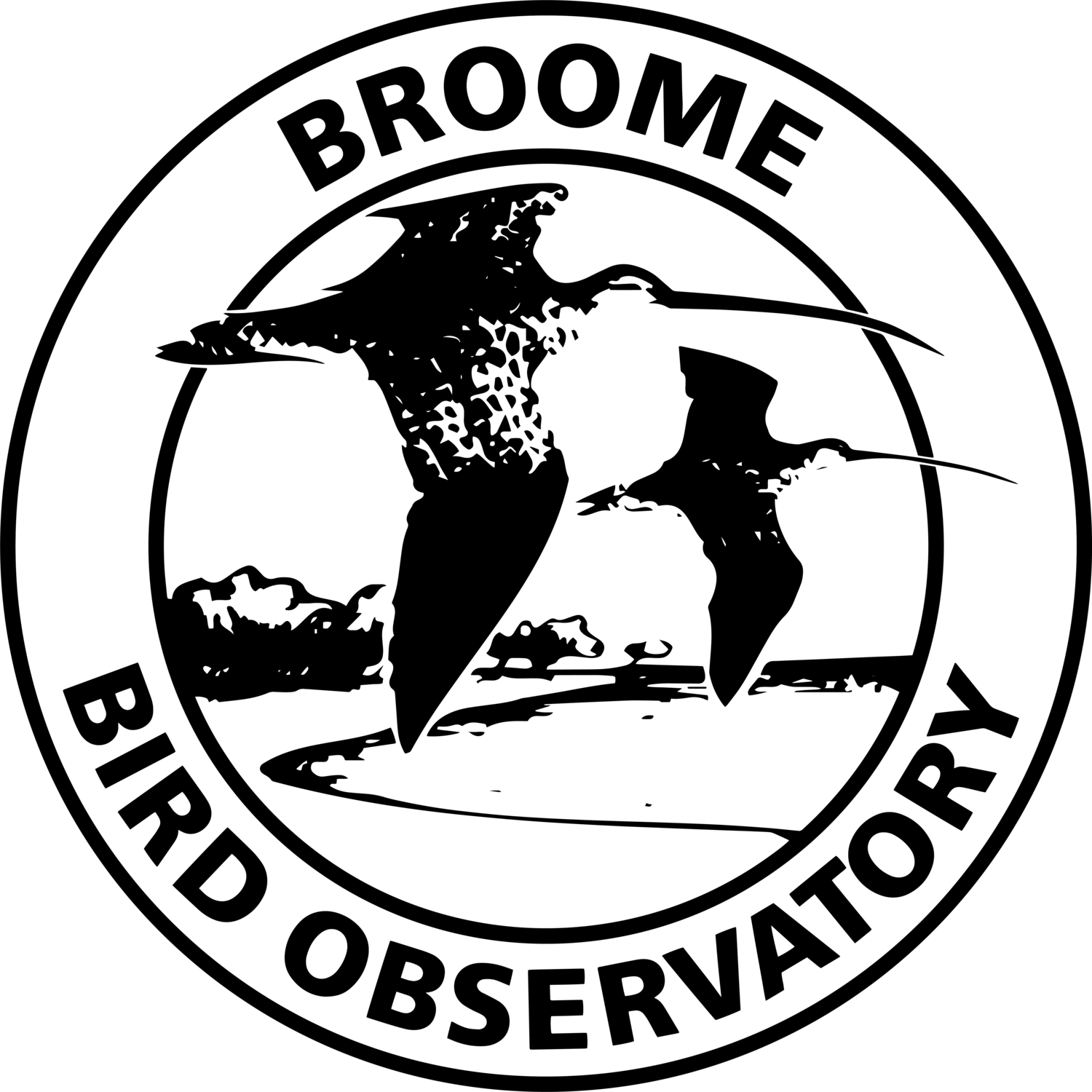September to November (2016)
The September period started quietly for the BBO, allowing staff a well-earned rest after the busy season to get ready for our Birds of the Broome Region courses! These continue to prove popular, with both courses fully booked. We suspect this has as much to do with the cooking as it does the birding, which should tell you something about the cuisine as the birding is pretty impressive! The dry conditions necessitated a few itinerary changes from last year, but we were still able to record an impressive 136 and 135 species in the two courses respectively, including many of our ‘usual’ specials like Yellow Chat and Common Redshank. Chef de cuisine Jaime and new sous chef Emilia also kept up the reputation of the course catering, with some much-appreciated assistance from our camp hosts, and all participants seemed to go home happy!
It was a case of no rest for the wicked between courses this year though, as we also had the privilege of hosting a major international mud-sampling expedition in early October, AnnRoeBIM16 (Anna Plains and Roebuck Bay Invertebrate Mapping 2016). This was organised by the likes of Grant Pearson, Theunis Piersma and others, with great support from the Department of Parks and Wildlife, local Yawuru, Karajarri, and Nyangumarta indigenous rangers, and a team of volunteers. The goal was to undertake comprehensive mapping of the benthic invertebrate fauna of Roebuck Bay and Eighty Mile Beach. These data will be compared against data from previous sampling expeditions, as well as providing a baseline for ongoing monitoring of benthic fauna in the new Roebuck Bay Marine Park. The expedition was a huge success, with all major objectives achieved, and it was fantastic to have so many highly regarded scientists grace the observatory with their presence!
Members of the AnnRoeBIM16 expedition hard at work sorting samples in the Pearson Lab at BBO
In the bay, shorebird numbers have increased significantly as the bulk of the shorebirds have now returned from their Arctic breeding grounds. There are now probably over 100,000 shorebirds using Roebuck Bay, with more exact numbers to be determined during the upcoming MYSMA (Monitoring Yellow Sea Migrants in Australia) shorebird counts. Of particular note this year has been the number of juvenile Curlew Sandpipers recorded; though only a qualitative observation at this point, similar observations have been noted at several sites across Australia and suggest that this Critically Endangered shorebird has had a much-needed good breeding season. The number of Common Redshank in the bay has increased to at least six, but our Asian Dowitchers largely deserted us in early September and still remain in short supply. Their disappearance is something of a mystery, though similar observations have been made in previous years.
Most of the summer migrants have returned to Broome, including Channel-billed Cuckoo, (Oriental) Dollarbird, Barn Swallow and Eastern Yellow Wagtail. Our grassland waders like Little Curlew, Oriental Plover, and even some early Oriental Pratincoles have also been making appearances on the grasslands behind the observatory and near Dampier Creek, and on the town ovals. The first Gallinago sp. Snipe (likely a Swinhoe’s) was seen on one of the ovals during our October course.
Barn Swallow at Willie Creek, photographed by one of our guests, Michael Hanvey, while on tour with George Swann
The rarity season is now upon us with the approaching Wet, but things have yet to kick off properly. The dry conditions this year, and the fact that the sewage ponds have not been easily accessible since late September due to important works being undertaken, have probably both contributed to this. Nonetheless, there have still been a few nice birds to keep things interesting. As foreshadowed in our last update, Sammy the Semipalmated Plover has returned to the sewage works and adjacent beaches for an 8th season. Sammy was first found on the 2nd October and has been seen at regular intervals since then, although the access issues at the sewage ponds have made sightings trickier. A Little Ringed Plover was found by George Swann at Crescent Lake on 29th September, and has remained present since, albeit not always easy to find, while George also heard a Rose-crowned Fruit-Dove along Lullfitz Drive in Cable Beach on 31st August – unfortunately this wasn’t relocated despite several searches. A Magpie Goose at Nimalarraggan on the 1st October was also an unexpected bonus for participants on our first BoBR course (not to mention a new Broome bird for one of the guides!)
It is now well into the Wet season quiet time, with a reduced staff at the observatory and only occasional visitors. Staff time is now mostly being taken up cleaning the place up a bit and preparing everything for the onset of the Wet season proper (and writing website updates obviously!), as well as keeping a sharp eye out for the first MEGA of the season! Any day now………………………………


